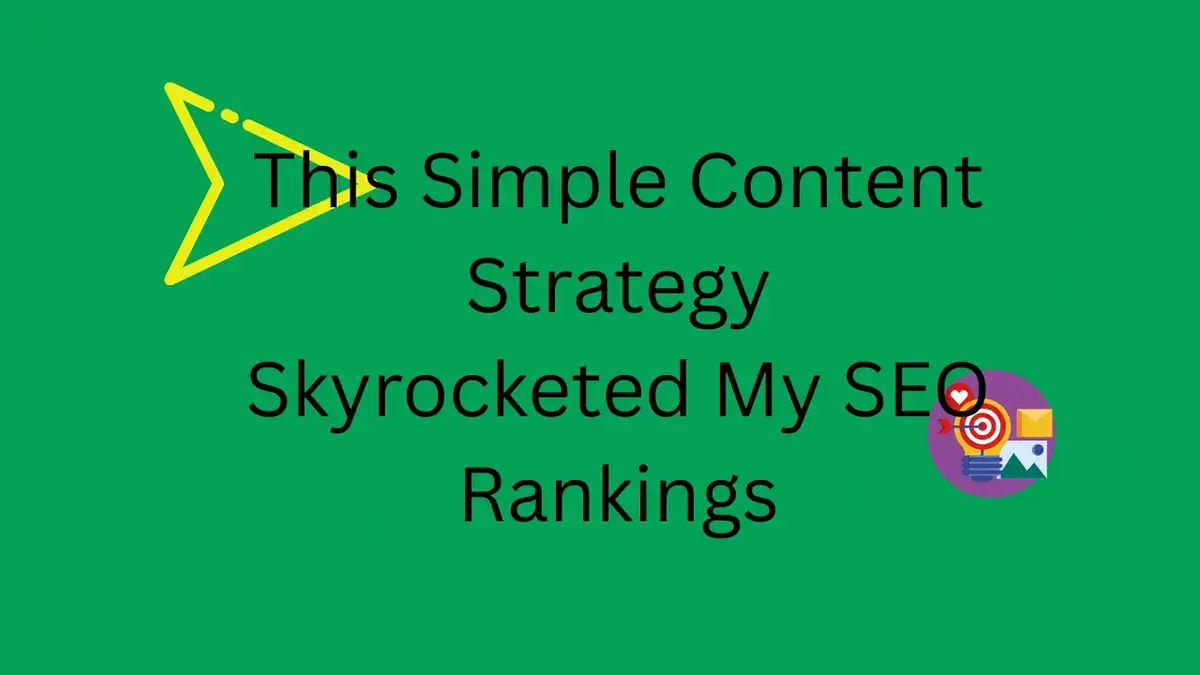In the fast-moving world of digital marketing, many businesses focus on producing fresh content to stay competitive. However, what often goes unnoticed is the hidden potential in existing content. By refining, reorganizing, and strategically linking content that’s already on your website, you can significantly improve your SEO performance—without publishing a single new post.

This comprehensive guide walks you through a five-step strategy to make the most of your existing content. Whether you’re a solo blogger, a growing e-commerce business, or a large organization, this approach can help you increase organic traffic, strengthen your website authority, and provide a better user experience.
Key Notes:
- Conduct a full content audit to assess every URL on your site.
- Identify underperforming or cannibalized content that needs attention.
- Build a pillar-cluster structure for content themes.
- Use strategic internal linking to distribute authority.
- Maintain and update content regularly for continued performance.
Step 1: Run a Complete Content Audit
Before making any changes, you need to know what you’re working with. A content audit involves cataloging every page on your website—blog posts, landing pages, product pages, case studies, FAQ pages, and everything in between.
What to Include in the Audit:
- URL
- Page title
- Primary keyword(s)
- Target audience or goal of the page
- Organic traffic data
- Keyword ranking
- Backlink count
- Last updated date
Recommended Tools:
- Google Search Console
- Google Analytics
- Screaming Frog SEO Spider
- Semrush or Ahrefs
These tools help you extract technical and performance data at scale. Use this information to build a spreadsheet that serves as your content inventory.
Read Also : How Digital PR Supercharges SEO in 2025: Build Authority, Earn Links & Dominate Rankings
Step 2: Analyze Performance and Make Smart Decisions
Now that you have your content inventory, it’s time to evaluate each page based on SEO performance and user engagement. Look for pages with strong impressions but low clicks. These pages are ripe for optimization—they’re visible in search results but not compelling enough to drive traffic.
What to Look For:
- Pages that have declined in rankings over time
- Cannibalized content (multiple pages ranking for the same keyword)
- Content with thin value or outdated information
- Broken or dead pages that no longer serve a purpose
What Actions to Take:
- Update: Refresh content with new stats, images, or case studies.
- Merge: Combine similar articles into one high-value page.
- Redirect: Set up 301 redirects for outdated pages to relevant new ones.
- Delete: Remove low-value or duplicate content with no ranking potential.
Cleaning up and consolidating your content sends a strong signal to search engines that your site is well-maintained and relevant.
Step 3: Build Topic Clusters and Pillar Pages
One of the most powerful ways to improve SEO is by building a structured content architecture around specific topics. This is where the concept of pillar pages and topic clusters comes into play.
What is a Pillar Page?
A pillar page is a comprehensive resource focused on a broad topic (e.g., “Email Marketing Guide”). It links to multiple related blog posts or articles—these are the cluster pages—that go deeper into subtopics (e.g., “How to Create Email Sequences,” “Best Email Subject Lines”).
Why This Works:
- Reduces keyword cannibalization
- Establishes topical authority
- Enhances user navigation
- Helps Google better understand your site’s structure
How to Build It:
- Choose 4–6 core themes relevant to your business or niche.
- Designate one main page for each theme as your pillar content.
- Identify or create supporting cluster content that expands on subtopics.
- Link cluster pages back to the pillar using descriptive anchor text.
This structure not only organizes your site better but also boosts the authority of your pillar pages, which are often key to converting visitors.
Read Also: WordPress vs Laravel: Choosing the Right Platform for Your Next Web Project
Step 4: Use Strategic Internal Linking
Internal links are often underutilized. When placed strategically, they can pass link equity (ranking power) between pages and guide users through your website logically.
Best Practices for Internal Linking:
- Use contextual anchor text that describes the target page.
- Link from high-authority pages to important service or product pages.
- Ensure every blog post links to its relevant pillar page.
- Avoid overloading pages with too many internal links (3–7 is a good rule of thumb).
Benefits of Internal Linking:
- Distributes page authority effectively.
- Increases crawlability for search engines.
- Keeps users on-site longer, reducing bounce rate.
- Promotes conversions by guiding users toward CTAs.
Keep a checklist of internal links when publishing new content. Always update old content to include new pages as they’re created.
Step 5: Maintain and Refresh Content Regularly
Content isn’t a “set it and forget it” asset. Even evergreen topics require updates due to algorithm changes, shifting industry standards, or evolving user behavior.
Maintenance Tasks:
- Revisit and update outdated statistics and references.
- Add new FAQs, tools, or resources.
- Recheck internal links and replace broken ones.
- Repurpose blog content into different formats—videos, infographics, or newsletters.
- Use Search Console to identify declining content and take corrective action.
Frequency:
- Conduct a mini-audit quarterly.
- Refresh top-performing content at least once a year.
- Update strategic pillar pages biannually.
By scheduling regular content maintenance, you ensure your site stays relevant and authoritative over time.
Why You Should Focus on Existing Content First
Too often, businesses get caught in a loop of publishing new content while their existing assets sit idle. But the truth is, your old content likely holds immense SEO potential—it’s already indexed, has backlinks, and has some level of authority.
Major Benefits:
- Faster Results: Updating content can yield quicker SEO wins than writing from scratch.
- Cost-Effective: No need to hire writers or develop new strategies.
- Improves User Experience: Fresh content builds trust and delivers more accurate information.
- Strengthens Topical Relevance: Helps Google see you as an authority in your field.
In other words, content optimization gives you more visibility with less effort.
Common Mistakes to Avoid
- Ignoring data when deciding what to update or delete.
- Failing to set up redirects after deleting or merging content.
- Using vague or over-optimized anchor text for internal links.
- Not measuring the performance of updated content.
- Overlooking the user experience while focusing solely on keywords.
Avoiding these pitfalls will ensure your optimization efforts lead to long-term results.
Read Also: How Long Does SEO Take to Work? Google Finally Explains the Timeline
Real-World Results from Content Optimization
Many SEO professionals have seen incredible growth using this method. For example, optimizing a client’s blog content by updating titles, refining structure, and improving internal linking led to a 60% increase in organic traffic within 3 months.
Another case involved merging five similar blog posts into one pillar article. The consolidated page not only ranked in the top 5 for a competitive keyword but also reduced bounce rates by over 20%.
The proof is clear: maximizing existing content drives real business value.
Final Thoughts
In the world of search optimization, content is still king—but only if it’s properly managed. Instead of churning out endless new blog posts, turn your focus inward. Audit what you have. Refresh what works. Cut what doesn’t. And structure it all in a way that builds topic authority.
By following this proven 5-step method—Audit, Analyze, Structure, Link, and Maintain—you can unlock the full value of your website content. The result? Higher rankings, better user experience, and more conversions.



